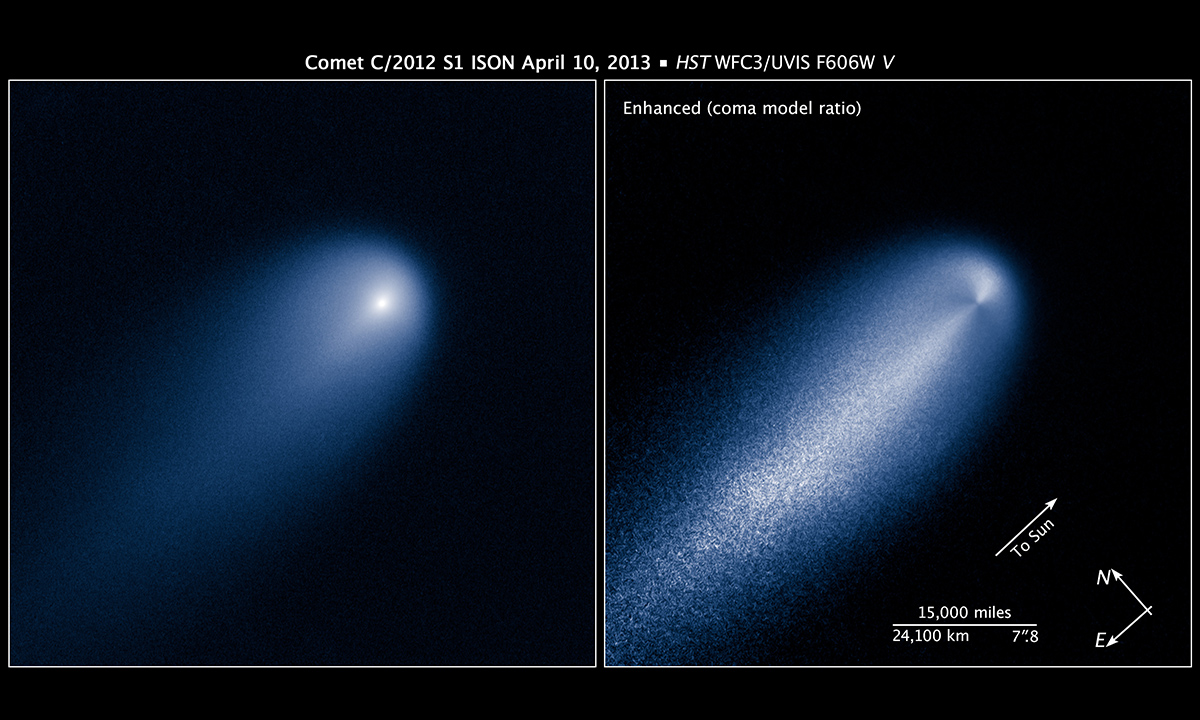Hubble Captures Comet ISON
| Credit | NASA/ESA/STScI/AURA |
|---|---|
| Language |
|
This NASA Hubble Space Telescope image of Comet (C/2012 S1) ISON was photographed on April 10, when the comet was slightly closer than Jupiter's orbit at a distance of 386 million miles from the Sun (394 million miles from Earth).
Even at that great distance the comet is already active as sunlight warms the surface and causes frozen volatiles to sublimate. A detailed analysis of the dust coma surrounding the solid, icy nucleus reveals a strong, jet blasting dust particles off the sunward-facing side of the comet's nucleus.
Preliminary measurements from the Hubble images suggest that the nucleus of ISON is no larger than three or four miles across. This is remarkably small considering the high level of activity observed in the comet so far, said researchers. Astronomers are using these images to measure the activity level of this comet and constrain the size of the nucleus, in order to predict the comet's activity when it skims 700,000 miles above the sun's roiling surface on November 28.
The comet's dusty coma, or head of the comet, is approximately 3,100 miles across, or 1.2 times the width of Australia. A dust tail extends more than 57,000 miles, far beyond Hubble's field of view.
More careful analysis is currently underway to improve these measurements and to predict the possible outcome of the sungrazing perihelion passage of this comet.
This image was taken in visible light. The blue false color was added to bring out details in the comet structure.
ISON stands for International Scientific Optical Network, a group of observatories in ten countries who have organized to detect, monitor, and track objects in space. ISON is managed by the Keldysh Institute of Applied Mathematics, part of the Russian Academy of Sciences.


























